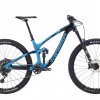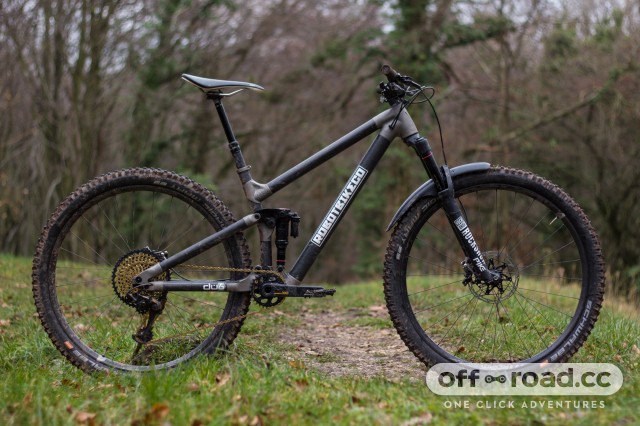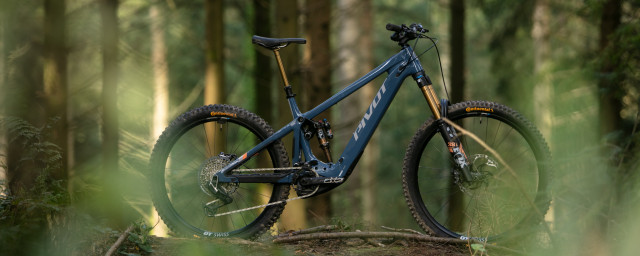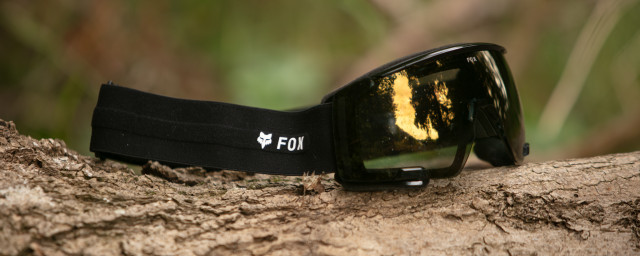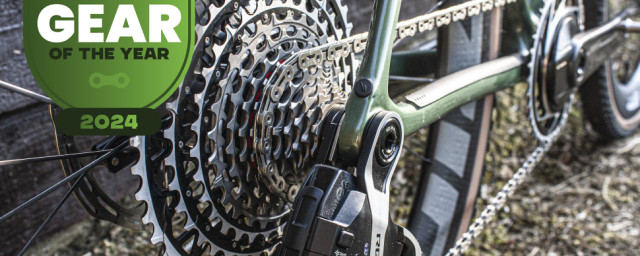First Ride: Robot Bike Co. R130

The R130 is Robot Bike Co.'s riotous wagon wheeled 130mm ripper using the progressive DW6 linkage to drive a trunnion mounted shock. Marry that to the alternative brand’s proven carbon/titanium manufacturing process and customisable geometry model and you have the recipe for something very, very special.
Robot Bike Co. was founded back in 2013 by a small team of guys with extensive experience in futuristic engineering practices and bike industry involvement. Skills honed from years in the aerospace, motorsport and bike media/testing world and the desire to create a bike that was truly customisable whilst incorporating a more environmentally friendly process of construction, right here in the UK, Robot Bike Co. was born.
The brand’s first successful foray was with the R160, their aggressive ‘enduro’ rig which uses 27.5 inch wheels and offers 160mm of progressive rear travel. With renewed consumer acceptance of what bigger, 29 inch wheels can offer when done well, the R130 was a natural evolution. The design and construction principles remain the same, using the company’s in house size analysis system to generate a suggested geometry package, or indeed your own preferences to create your very own personalised Robot. Other than the obvious differences of wheel size and rear wheel travel, the only other noticeable change is that the R130’s rocker linkage which has been changed slightly to incorporate a Trunnion mounted, metric shock. Ed at Robot says this enabled them to take advantage of the reduced breakaway force of the Trunnion shocks as well as shorten the eye to eye length without needing to shorten the stroke of the shock. Ultimately, this allows them to keep the weight as low as possible whilst enabling a lower standover on the R130.
I won’t go into the finer details of the construction process in this article, however they can be found in our special Robot Bike Co editorial piece, here. Suffice to say, prepared to be blown away with the details of engineering that Robot go to, to provide the customer with something truly durable, bespoke and grin inducing.
All of Robot Bike’s geometry can be customised to your personal preference should you have some or, like my test rig, you can purchase one of their preset sizing options. My R130 test rig was a general medium in size with a 440mm reach, 420mm seat tube, 75 degree seat angle, 430mm chainstays and a 65.5 degree head angle. Whilst that’s not my ‘ideal’ geometry, its fair to say its still on the progressive side for a short travel 29er and compared to some of the larger brands. Robot say they keep their ‘generic’ sizing options on the progressive side of conservative as if anyone wants anything more extreme, they’ll happily make it for them. One very obvious bonus of tailor-made frames!
My first impressions of the R130 is one of engineering beauty, the dull grey of the titanium lugs with sexy polished logos married to the pleasingly raw carbon tubes is a view the geeks amongst us could admire for hours. It uses the current standard of boost front and rear, fully internally routed cables and can have things like water bottle mounts fitted should you want some.
This particular demo bike was built up using some uber-bling kit - a full SRAM arsenal including XX1 Eagle drivetrain, Guide RSC stoppers, SRAM carbon wheels, 170mm stealth reverb and Burgtec carbon bars and stubby 40mm stem. The bouncers are from the SRAM stable too, a Trunnion mounted Monarch super deluxe shock and Pike RCT3 140mm forks. The total build, including two Schwalbe Magic Mary’s and Burgtec flat pedals came in at 28llbs. That’s impressively light for a bike as happy sending bike park laps as it is on an all day epic mission. Robot say they’re not out to build the lightest of frames however and that they’ll never sacrifice ride quality and durability for weight saving. A testament I agree with entirely, light bikes sound good on paper, but, a heavier bike with good numbers will climb and descend better than a light bike with poor geo.
With the obligatory car park fettling done, I head off into the wonders of the Forest of Dean off piste to get covered in crap and push the boundaries of what is, on paper, a short travel trail bike. Almost immediately, I’m flying up the steep fire road at a faster-than normal pace, in part due to the bikes svelte weight but also the steep(ish) seat angle keeps me at a good angle to the bottom bracket. The DW6 linkage keeps pedalling smooth with its inherent anti squat, rarely have I reached for the compression dial whilst riding the R130.
That aforementioned DW kinematics are truly superb, due in part to the very little required breakaway force of the Trunnion super deluxe shock, small bump sensitivity is almost coil-like. However, gas the R130 to flat, which it regularly encourages, and you’ll rarely find the end of the stroke, let alone a harsh bottom out. The support in the mid to end stroke is so confidence inspiring, I found myself repeatedly pushing the ‘little’ niner down trails that were far beyond its pay grade. The head angle on this test bike was adequate, I’d have it slacker, some will prefer it steeper - but then, you can have what you want anyway!
There’s a good level of flex in the frame, especially from the rear end when the going gets rough or corners schralped hard. I should just jump in and state I’m a fan of flex, to a certain point anyway. The industry has gone marketing mad on feeding their bikes viagra in the constant battle for stiffness. On paper that sounds great, as does the ability to keep other things stiff for hours on end however, in practice, that equates to something actually quite different. I’ve ridden bikes (think over built alloy hardtails vs steel ones), that are immensely stiff and that generally results in a bike that is increasingly skittish in the rough and lacks grip when you push hard into flatter corners. You only need to take one look at Moto GP to see that engineers are constantly working to find ways to include constitutional flex into their frames to increase, yup you guessed it, grip. Robot say they’ve intentionally done the same in their bid to increase grip as well as comfort and durability. All I know is that it was never so much that it upset the ride balance, but grip could be found by the bucket load, even with super-stiff carbon wheels.
I even took the R130 on an uplift day at Black Mountains Cycle Centre and sent it off some of their biggest booters in a bid to find its limit - the bike won! The only time I really felt under-biked was on big, consecutive holes where the travel on offer got packed down and occasionally nearly stuck me over the bars. But then, this was well outside of its job description and with better line choice, I rode everything on offer. Despite it not having my ‘ideal’ geo, its the first bike I’ve had on test in a long time that I’ve enjoyed everything I’ve ridden on it, from 6 hour XC missions to shuttling black DH runs. Literally the only thing I found that irritated me about the Robot was the cable noise from the internal routing, something Robot say can be easily sorted should it bother you - I’m a noise nerd so I’m acutely aware of rattles.
Ok, at some point, maybe before I even got started, some of you will have thought about the cost and said - ‘it better be mint for that price’. Well, in some ways you are indeed correct and thus its fortunate that it is just that, mint! When you consider a carbon Santa Cruz Nomad costs £3200 for a frame and shock, and a fully bespoke and customisable Robot Bike Co frame and shock comes in at £3850, I know where my money would be going. Robot Bike Co. also offer full builds for £6,966 with a similar spec to our test bike, taking them firmly into the competitive arena with other high end carbon bikes. The other argument is that it's over-engineered or over complicated, the larger brands are keeping it simple because it works. Well, the thing is, it often doesn’t work, does it?! The time that Robot have spent working on their build quality and ensuring the tolerances their frames are tested to, far exceeds much of the competition. Include the fact that their frames are built entirely in the UK and the time they’ll spend with you creating your bespoke beast and that for me, should I be in the market for something at the high end of the market, is worth every single penny.
Robotic by name and in some ways design - pun intended, but by no means in the way the R130 rides - damn, what an awesome ‘little’ bike.
You might also like:
- Feature - Keeping it real: The BTR Fabrications Story
- Feature - Bird Cycleworks: From the ground up
- Feature - Shand Cycles and the future of UK manufacturing



